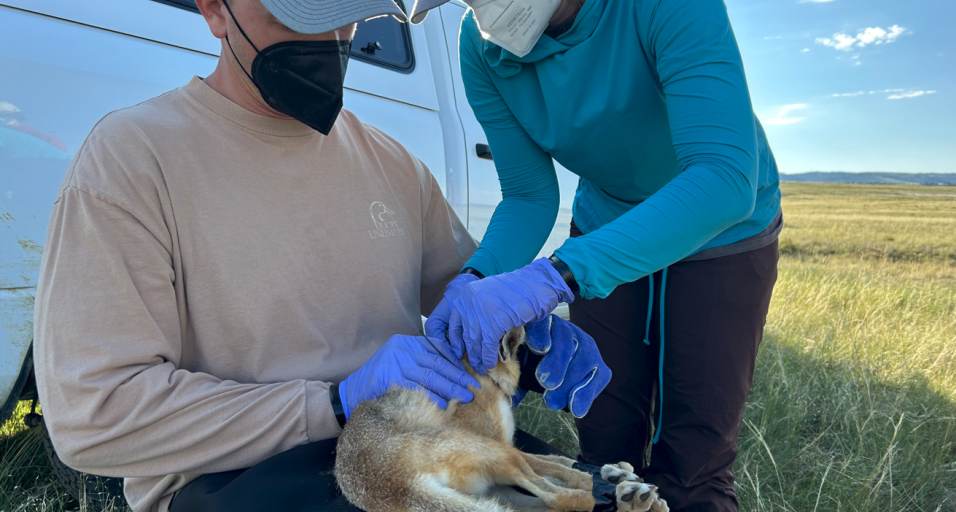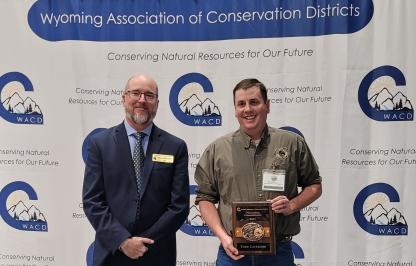At the end of July, Wyoming Game and Fish Department responded to a call about a den of swift foxes near a runway at the Laramie Regional Airport. Animals on or near airport runways must be euthanized or relocated because of the danger they pose to planes taking off and landing. Game and Fish was able to work collaboratively with the Airport and the Holbrook Team at the University of Wyoming to relocate seven swift foxes to the Pilot Hill area.
“We were fortunate to have the opportunity to capture and relocate these foxes,” said Lee Knox, Game and Fish wildlife biologist in Laramie. “We had a very short window of time to get these foxes away from the airport, and appreciated the swift fox trapping expertise the Holbrook Team was able to bring to the effort.”
The Holbrook Team researches many species of carnivores across Wyoming, including red and swift foxes. Graduate student Kelsie Buxbaum is entering her third year of swift fox research in the state, studying habitat and resource use of the animal in traditional and expanding areas of their range. She was able to apply trapping and handling techniques developed during her research to the airport rescue effort. Buxbaum expressed gratitude to the managers of the airport for providing the opportunity to trap these foxes.
“It was a huge win for us and the foxes,” said Buxbaum. “The airport allowed us to work across two nights to get the foxes used to the trap on the first night, and then open traps on the second night. This is a technique I’ve used during my graduate research that really improves our ability to catch foxes.”
The Holbrook Team was able to capture five foxes on the second night of trapping. Airport staff trapped two additional foxes on subsequent nights. An additional bonus of the Holbrook Team’s involvement in the relocation effort was some of the foxes being outfitted with GPS collars, thanks to funding from the Bureau of Land Management, before they were released at Pilot Hill. Adding these collar data to the data collected by Buxbaum and other members of the Holbrook Team will advance scientific understanding about the species. This will also help inform Game and Fish management of swift foxes in the future.
Recreational users of the Pilot Hill area may notice these collared foxes. Game and Fish and the Holbrook Team request that recreationists avoid actions that could cause stress to these animals. Swift foxes can become stressed by encounters with unleashed pets or close encounters with humans. They are naturally skittish, but are prone to encounters when using a den area. If you see swift foxes around a den, please leash your pets and give them space. Observing foxes from a safe distance (50 yards) with binoculars can be a very entertaining experience!
Swift foxes are seemingly increasing their range in Wyoming, but populations in other states are in decline. This species is of national concern, and maintaining healthy populations in Wyoming is important. Swift foxes cannot be hunted or trapped, but are sometimes mistaken for coyote pups. The two can be differentiated by observing the size and shape of the frame, and by the dark patches on either side of the muzzle of a swift fox. Adult swift foxes are about the size of a large house cat.
Swift foxes at Laramie Regional Airport collared, relocated to Pilot Hill Recreation Area



